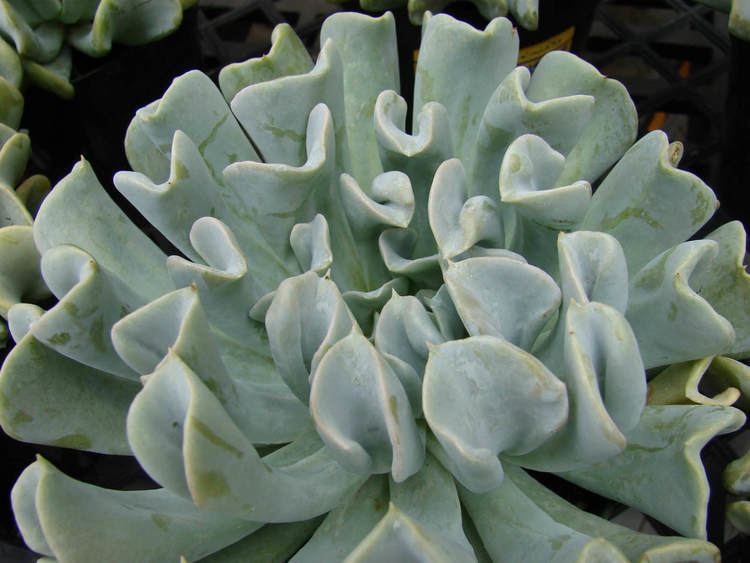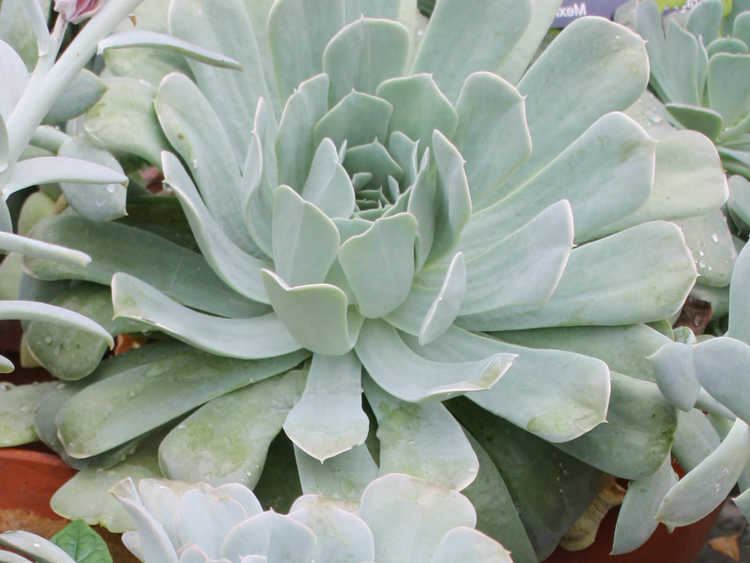Series Pruinosae Rank Species | ||
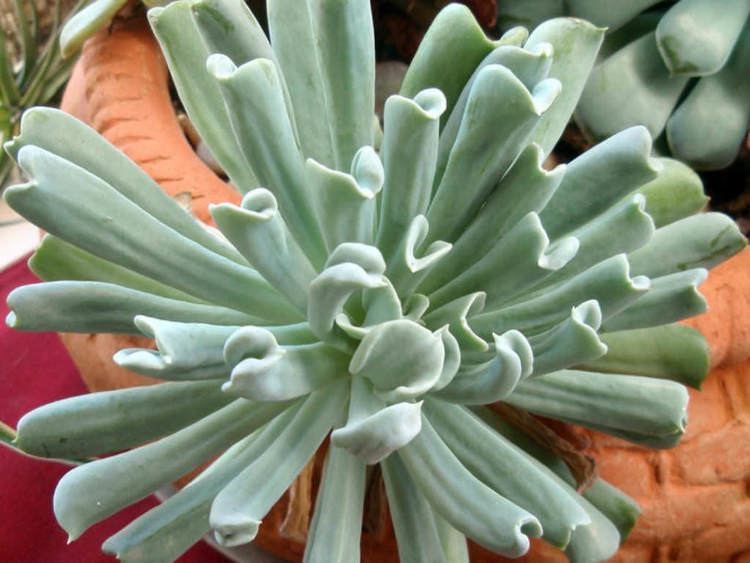 | ||
Similar Echeveria, Echeveria agavoides, Echeveria derenbergii, Echeveria setosa, Echeveria lilacina | ||
Echeveria runyonii is a species of flowering plant in the sedum family, Crassulaceae, that is native to the state of Tamaulipas in Mexico. Several cultivars have been described and cultivated.
Contents
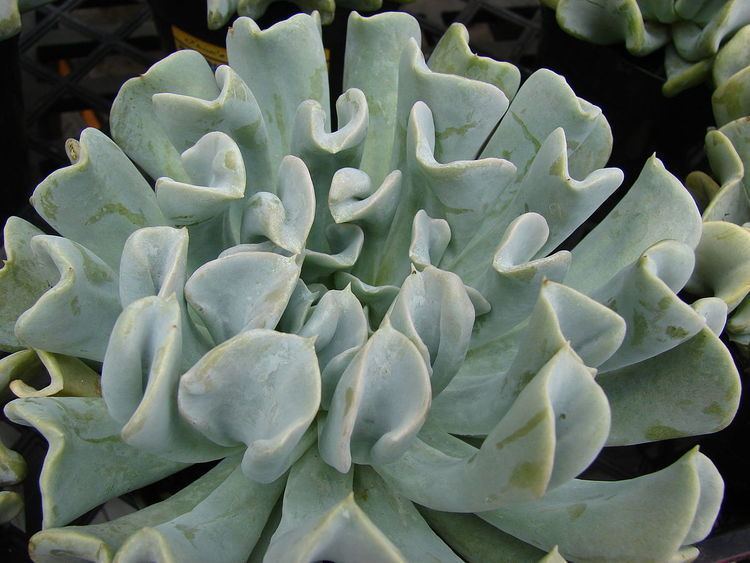
Taxonomy
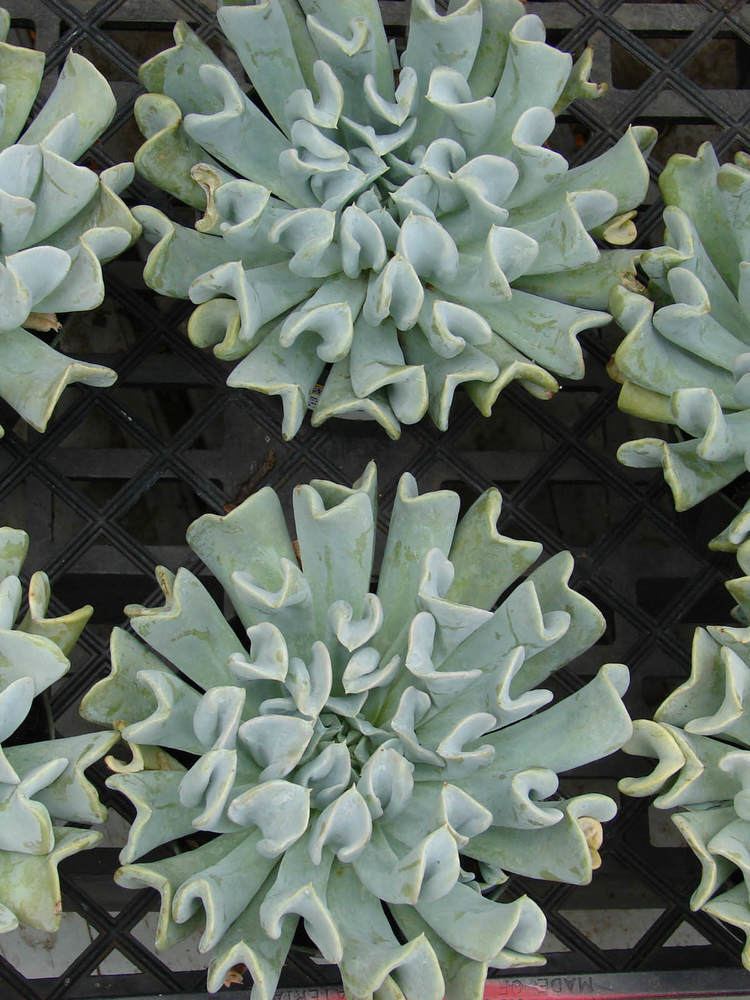
Joseph Nelson Rose described Echeveria runyonii in 1935, named in honour of Texas amateur botanist Robert Runyon. Runyon had collected the type specimen from a Matamoros, Tamaulipas garden in 1922. Wild populations were unknown until 1990, when one was discovered by the staff of Yucca Do Nursery.
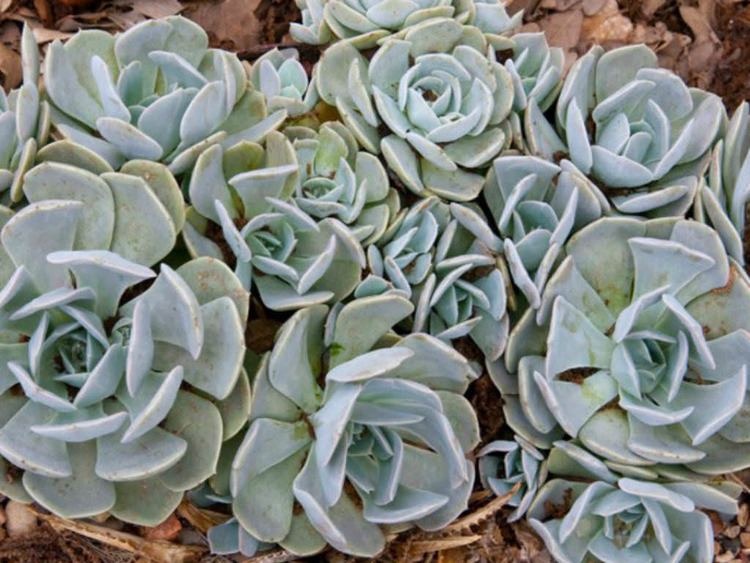
The cytology of Echeveria species is helpful in identification, as many species can be very variable in appearance; E. runyoni has 14 chromosomes.
Description
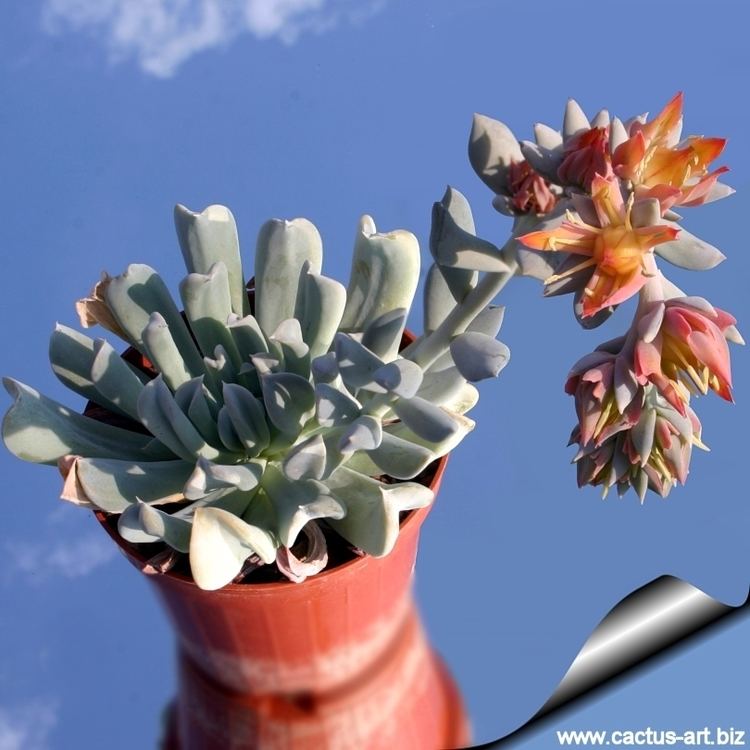
Echeveria runyonii forms a rosette 8–10 cm (3.1–3.9 in) in diameter. Leaves are spatulate-cuneate to oblong-spatulate, truncate to acuminate, and mucronate. They are a glaucous pinkish-white in color and measure 6–8 by 2.5–4 cm (2.4–3.1 by 1.0–1.6 in). The single stem reaches 10 cm (3.9 in) in length or more and a diameter of roughly 1 cm (0.39 in). Inflorescences are 15–20 cm (5.9–7.9 in) tall and have 2 – 3 cincinni, conspicuous bracts, and pedicels approximately 4 mm long. The red flowers have ascending-spreading sepals to 11 mm and pentagonal corollas measuring 19 – 20 × 10 mm.
Echeveria peacockii has similar-coloured glaucous leaves, but its leaves are wedge-shaped with mucronulate (pointed) tips.
Cultivation
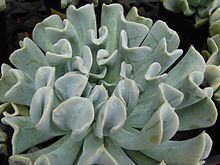
Several named cultivars exist, including 'Texas Rose', 'Dr. Butterfield', 'Lucita', 'Tom Allen', and 'Topsy Turvy'. The last is a mutant form, which originated in California, in which the leaves are positioned upside-down.
Hybrids
